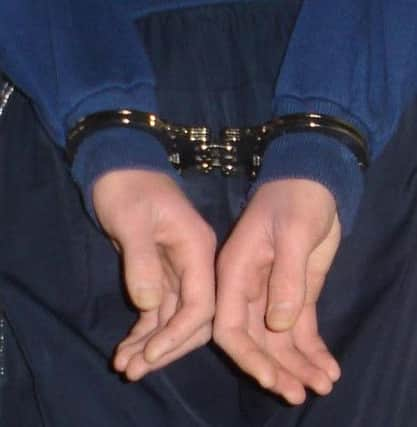Number of children arrested in Northamptonshire falls by half


The figures follow a concerted effort by police and a successful campaign by the Howard League for Penal Reform to keep as many boys and girls as possible out of the criminal justice system.
Figures published by the charity today (Monday, October 10) reveal that, during 2015, Northamptonshire Police made 1,115 arrests of boys and girls aged 17 and under.
Advertisement
Hide AdAdvertisement
Hide AdThe statistics show that the force has made significant progress since 2010, when it made 2,594 child arrests.
Across England and Wales, police made 102,666 arrests of boys and girls aged 17 and under during 2015 – a 58 per cent reduction in five years.
Many forces have reviewed their arrest procedures and policies after the Howard League’s positive engagement with them.
Every police force in England and Wales made fewer child arrests in 2015 than in 2010.
Advertisement
Hide AdAdvertisement
Hide AdThirty-four forces brought down their number of child arrests by more than half, including 10 who achieved reductions of more than 70 per cent.
The most successful force in the country was Humberside Police, which recorded a 77 per cent drop in the number of arrests.
There were 874 arrests of primary-age children (10 and 11-year-olds) in 2015, a reduction of 19 per cent from the previous year.
Detective Superintendent Steve Lingley, head of safeguarding at Northamptonshire Police, said: “We have a close working relationship with partners to ensure we take a child focused approach when children are believed to have been involved in crime and we will always seek the most appropriate form of action, dependant on the type of incident.
Advertisement
Hide AdAdvertisement
Hide Ad“The Northamptonshire Safeguarding Children Board has oversight of police data which includes the detention of children and young people in order to scrutinise the police response.
“The multi-agency response allows for any wider issues such as the impact of home life to be considered and taking this approach can see the offending stop.
“Working with schools, the Youth Offending Service and social services, we have introduced restorative practices, in a bid to divert young people away from offending behaviour, and this drop is a reflection of that work.
“However, we also recognise that there will always be those occasions, particularly when more serious offences are involved, that children will be arrested and the criminal justice system is the correct pathway.
Advertisement
Hide AdAdvertisement
Hide Ad“In those cases we work to manage the welfare of the child while balancing the needs of the investigation.”
Frances Crook, chief executive of the Howard League for Penal Reform, said: “I applaud Northamptonshire Police for their success in reducing child arrests.
“The Howard League is proud to have played its part in a significant change to the policing and life chances of children.
“It is particularly gratifying that, across England and Wales, the reduction in child arrests matches exactly the reduction in custody for children, and it is no coincidence. We have stemmed the flow of children into the justice system and the consequential downward spiral into crime and custody.”
Advertisement
Hide AdAdvertisement
Hide AdThe statistics have been published in a Howard League briefing, Child arrests in England and Wales 2015, which shows how reducing the number of children entering the system has stemmed the flow of children into custody.
Between 2010 and 2015, the number of children in prison in England and Wales fell by 58 per cent – decreasing at the same rate as child arrests.
Arrests of girls are falling at a faster rate than arrests of boys. Police recorded a 63 per cent drop in girls’ arrests between 2010 and 2015, and the number of girls in prison decreased by the same proportion.
The briefing states that the welcome fall in arrests can be attributed to better use of resources to solve problems, the removal of national targets, improved staff training, and support from communities.
Child arrest figures for Northamptonshire Police
2010: 2,594
2011: 2,177
2012: 1,660
2013: 1,289
2014: 1,270
2015: 1,115